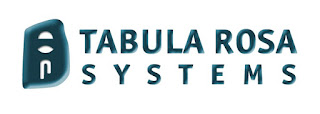by
Updated
April 03, 2019
For
an artist, the canvas is a mouthpiece. The artist speaks with vibrant colors,
bold strokes, and fine lines. She whispers her secrets, shares her passion,
expresses her anguish, and taunts your sensibilities. Are you ready to hear the
language of art?Art inspires people. Consider the works of Michelangelo, Picasso, or Leonardo da Vinci. People throng to museums to admire their work. Their paintings, murals, and sculptures are subjects of deep academic interest. These great artists lived several centuries ago, yet their work continues to inspire new generations of artists.
Famous Artists and What They Say About Art
These quotes from 12 famous artists provide insight into the art world. Their words infuse a new surge of creativity. They urge you to get inspired to pick up your paintbrush and palette.Brett Whiteley
Australian avant-garde artist Brett Whiteley continues to spur the creativity of artists, and common people, across the world. He won Australia’s most respected award, Archibald, the Wynne, and Sulman, twice. Whiteley created his art in Italy, England, Fiji, and the U.S.
"Art should astonish, transmute, transfix. One must work at the tissue between truth and paranoia."
Edward Hopper
American realist painter and printmaker Edward Hopper was famous for oil paintings, but he also made his mark as a watercolorist and etchings. Regular American life and the people were two of Hopper’s muses.
"If I could say it in words, there would be no reason to paint."
Francis Bacon
Irish-British figurative painter Francis Bacon is best known for the boldness of his art. The imagery that he used was raw and evocative. He is best known for his works, "Three Studies for Figures at the Base of a Crucifixion" (1944), "Study for Self-Portrait" (1982), and "Study for a Self Portrait — Triptych" (1985-86).
"The job of the artist is always to deepen the mystery."
"Picasso is the reason why I paint. He is the father figure who gave me the wish to paint."
Michelangelo
One of the best-known painters and artists from the Renaissance age, Michelangelo and his works have shaped western art. The Italian sculptor, painter, poet, architect, and engineer is famous for painting the scenes from Genesis on the ceiling and depicting "The Last Judgment" on the wall of the Sistine Chapel in Rome. He was also the architect of St. Peter’s Basilica.
"If people knew how hard I worked to get my mastery, it wouldn't seem so wonderful at all."
Pablo Picasso
Spanish artist Pablo Picasso has been one of the most powerful artists of the 20th century. He co-pioneered the Cubist movement and is most well-known for works such as proto-Cubist "Les Demoiselles d’Avignon" (1907) and "Guernica" (1937).
"As a child, I drew like Raphael but it has taken me a lifetime to draw like a child."
"Art washes away from the soul the dust of everyday life."
"Every child is an artist. The problem is how to remain an artist once he grows up."
Paul Gardner
Scottish painter Paul Gardner espouses European and Scottish artistic conventions through this art. Buddhism and Eastern philosophy have been his major influences.
"A painting is never finished — it simply stops in interesting places."
Paul Gauguin
French post-Impressionist artist Paul Gauguin received true recognition only posthumously. His style of experimenting with colors made him stand apart from Impressionists. Gauguin was an important member of the Symbolist movement, and it led to the creation of the Synthetist style, Primitivism, and return to pastoral styles.
"I shut my eyes in order to see."
Rachel Wolf
Rachel Wolf is an American artist and freelance editor. She has edited numerous books on painting such as "Keys to Painting: Fur and Feathers," "Watercolor Secrets," "Strokes of Genius: The Best of Drawing," among others.
"Color is fun, color is just plain gorgeous, a gourmet meal for the eye, the window of the soul."
Frank Zappa
American musician Frank Zappa made music for over three decades. He played rock, jazz, and other kinds of music while also directing films and music videos. Zappa was feted with the Grammy Lifetime Achievement Award in 1997.
"Art is making something out of nothing and selling it."
Lucian Freud
German-born British painter Lucian Freud was celebrated for his impasto portrait and figure paintings. His art has a psychological angle and often explores the uncomfortable connection between the artist and the model.
"The longer you look at an object, the more abstract it becomes, and, ironically, the more real."
Paul Cezanne
Paul Cezanne was a French artist and post-Impressionist painter. Paul Cezanne is responsible for providing a link between the 19th century Impressionism and 20th century Cubism. Cezanne’s charm lay in the fact that even though critics trashed him, younger artists revered him during his lifetime.
"There is a logic of colors, and it is with this alone, and not with the logic of the brain, that the painter should conform."
Robert Delaunay
French artist Robert Delaunay started the Orphism art movement along with his wife, Sonia. His art used symmetrical shapes, and in later life became more abstract.
"Painting is by nature a luminous language."









